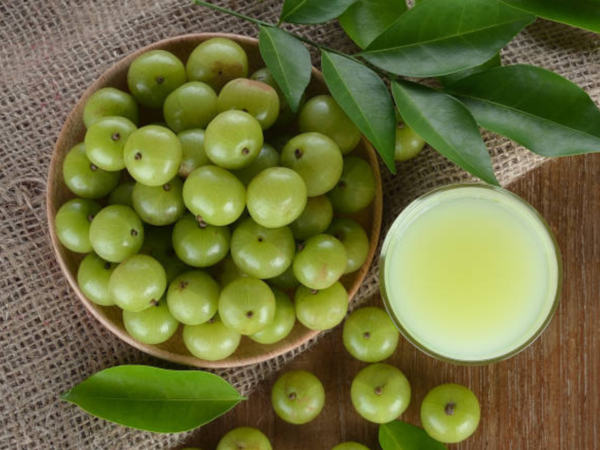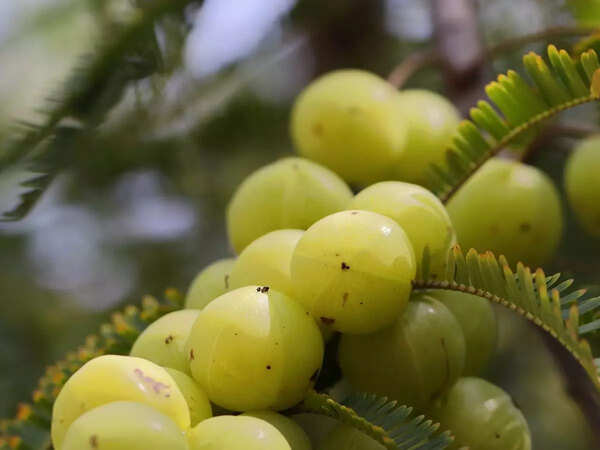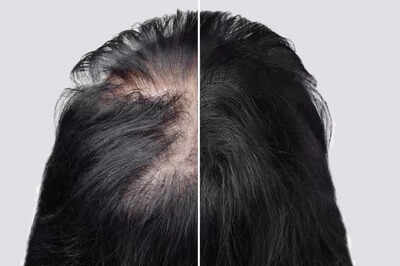How to grow hair on bald patches using Amla

Bald patches can be frustrating, and if you’ve found yourself obsessively Googling natural remedies, chances are you’ve come across amla, also known as Indian gooseberry. Revered in Ayurveda for its incredible health benefits, amla is often referred to as a miracle ingredient for hair regrowth and for good reason. Packed with Vitamin C, antioxidants, and essential fatty acids, this tiny green fruit holds the power to rejuvenate your scalp and bring dormant hair follicles back to life.
If you are wondering how to use amla to tackle bald patches effectively, you’re in the right place. Let’s dive deep into how this ancient superfood can help you on your journey to fuller, healthier hair.
Why Amla works for bald patches
Stimulates hair follicles:
Amla boosts blood circulation to the scalp, ensuring that hair follicles receive plenty of oxygen and nutrients. This stimulation can revive weak or dormant follicles responsible for bald patches.

<p>Amla, or Indian gooseberry, may be small in size, but it’s a powerhouse for your health. Packed with antioxidants and a generous amount of vitamin C, it helps repair the damage caused by free radicals, supporting your body’s natural defenses. These harmful molecules can damage cells, and amla helps protect and fix them. It’s tangy, a bit bold in flavor, and makes a great addition to chutneys or smoothies. You don’t need much—just a little goes a long way in boosting your immune system. <br></p>
Rich in Vitamin C:
Vitamin C is essential for collagen production, a protein that promotes hair strength and elasticity. Amla’s high Vitamin C content improves scalp health and supports the regrowth process.
Natural DHT blocker:
Excessive levels of DHT (dihydrotestosterone) are linked to hair loss. Amla naturally blocks DHT production, preventing hair follicles from shrinking and falling out prematurely.
Reduces scalp inflammation:
Bald patches are often worsened by scalp inflammation or infections. Thanks to its antibacterial and anti-inflammatory properties, amla soothes the scalp, keeping it clean and healthy.
Strengthens hair roots:
Regular use of amla can strengthen the hair shaft from root to tip, reducing hair fall and promoting thicker regrowth over time.
How to use Amla for regrowing hair on bald patches
Amla oil massage
One of the easiest and most effective ways to use amla is in oil form.
How to prepare:
Take 3–4 tablespoons of amla oil (available easily at pharmacies and Ayurvedic stores).
Warm the oil slightly (do not overheat).
Gently massage the oil into your scalp, focusing on bald patches.
Leave it on overnight for maximum absorption and wash off with a mild shampoo in the morning.
Tip: Massage in circular motions to boost blood flow, which can enhance the oil’s effectiveness.
Fresh Amla pulp mask
If you can get your hands on fresh amla, this mask works wonders.
How to prepare:
Blend fresh amla fruits into a thick pulp.
Apply the pulp directly onto your scalp, especially over bald areas.

<p style=”line-height:1.38;margin-top:0pt;margin-bottom:0pt;”><br></p><p style=”line-height:1.38;margin-top:0pt;margin-bottom:0pt;”>Summer brings with it a wave of heat-induced health issues like dehydration, sun stroke or stomach infections. One of the major things that leads to such conditions is the extreme heat exposure and the body’s need for hydration. While most people stick to coconut water, packaged drinks or lime juice to beat the heat, our bodies need ample strength to sustain the harsh weather conditions, and amla juice can be the best way to fix summer woes. Here’s all you need to know about amla juice and reasons to add it to the diet. </p>
Leave it on for about 30–40 minutes.
Rinse thoroughly with lukewarm water.
The fresh pulp not only feeds your follicles with active nutrients but also detoxifies your scalp.
Amla and fenugreek hair pack
Amla combined with methi (fenugreek) seeds can be a powerful recipe for hair regrowth.
How to prepare:
Soak 2 tablespoons of fenugreek seeds overnight.
Grind them into a fine paste.
Mix the fenugreek paste with 2 tablespoons of amla powder or fresh pulp.
Apply it generously on your scalp.
Leave it on for 45 minutes and rinse with a herbal shampoo.
Fenugreek is packed with protein and nicotinic acid, both essential for healthy hair growth, making this combo particularly powerful for bald spots.
Amla juice as an internal supplement
Hair health starts from within. Drinking amla juice can accelerate the regrowth process.
How to use:
Drink 30 ml of amla juice daily on an empty stomach.
You can also add it to your smoothies if you prefer a milder taste.
Internal consumption of amla boosts your immune system, improves digestion, and ensures your body gets the nutrients needed for hair growth.
Amla powder hair rinse
If you’re short on time, an amla powder rinse can be a great weekly treatment.
How to prepare:
Mix 2 tablespoons of amla powder in 2 cups of warm water.
Let it steep for 15 minutes.
Strain and pour the liquid over your scalp after shampooing.
Gently massage it in and leave it for 5–10 minutes before rinsing.
This rinse not only strengthens roots but also adds a natural shine and bounce to your hair.
Amla isn’t just another trendy ingredient, it’s a time-tested solution rooted in centuries of Ayurvedic wisdom. Whether you opt for an oil massage, a DIY mask, or sip on amla juice every morning, incorporating this miracle fruit into your haircare routine could make a real difference for your bald patches.
While severe or genetic hair loss may also require medical treatment, using amla is a safe, affordable, and effective way to kickstart healthier, stronger hair growth naturally. So why not give this green gem a chance?
After all, lush, thick hair could just be a few amla sessions away!
















